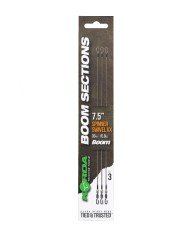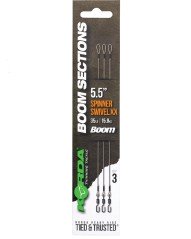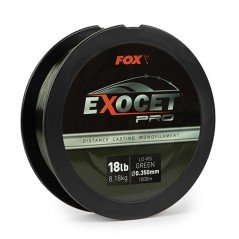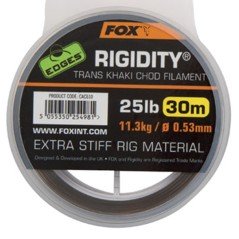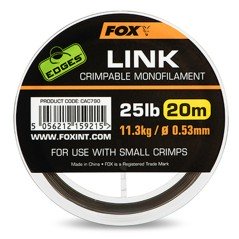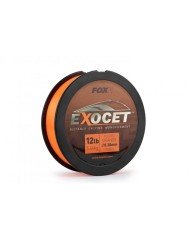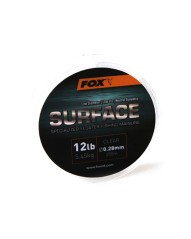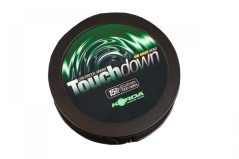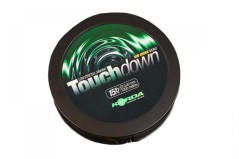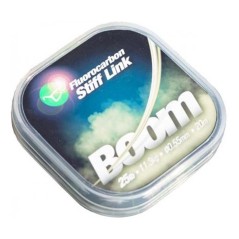How to Choose a Carp Fishing Thread
You bought the reels new and you have to imbobinarli with a good monofilament line carp fishing? Or maybe you'd like the braid? If you don't know what to choose, read this guide, we explain how to do it!
The choice of the wire from imbobinare on the reels carp fishing depends on the type of environment and the type of fish that we are going to do.
To make it easier to overview, we will discuss the types of thread one-by-one, indicating the uses and the situations in which they can give the best of themselves.
And we will give you a few tips on the pros and cons of their use.
Basically, as far as the carp fishing, there are three different types of wire from imbobinare on the reels: nylon, fluorocarbon, braided line. Let's take them one by one.
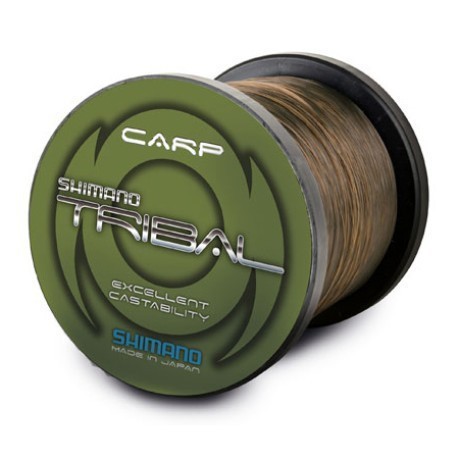
NYLON
Without doubt the wire “from the coil” and more widespread because it allows us to cover a wide variety of situations.
Of course, in the market there are many types of nylon, each with a specific nature.
For example, there are nylon - very soft - made specifically for the launch, while others are more rigid and durable, to withstand abrasion and to strong tractions.
To explain it in simple words, under the name of “nylon” end up so many different threads and, for example, the same diameter (0.35 mm), the differences can be many.
If we want to consider, however, the characteristics that are common to all nylon, we can say that this is the classic thread that it is always good.
All-round, for start, and also for the more experienced, of course, will choose their nylon according to your needs (launch, resistance, mimicry).
The question we have to ask ourselves is: where pescherò? If the answer is “everywhere”, then the nylon is what's best for us because it guarantees strength and durability, in addition to good performance from the point of view of the launch.
The defects, as compared to a braided line, have to do with its elasticity and its tensile strength. The nylon is very elastic (some of the types extend to nearly twice their length “at rest”) and the seal of the linear weight, the same diameter with the braid, is much lower.
That's why if we have to fish at long distance with the boat it is better to use braid: being inelastic, immediately transmits to the bites even more than 300 meters from the shore, and is the most reactive of nylon in combat.
Before moving on to the next material, we talk about the river. Those fishing in the water courses, the current, has in the nylon the only choice, because it is smooth: the braid, being rough, collects debris, especially seaweed and debris in suspension.
We would be forced to retrieve the line every three to two in order to free them from the debris.
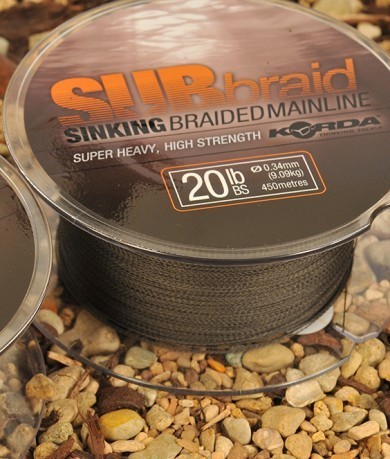
BRAID
Use the we have anticipated: the braid is necessary if we want to fish at long distances.
For three reasons:
- Resistance: an average of one 0,35 braid holds up to 50 pounds, or 22 pounds, while a good nylon at the maximum reaches 13. This results in extreme strength in combat and the responsiveness at the time of the ferrata;
- Inflexibility: the braid does not stretch, therefore, makes us “feel” all the reactions of the fish, from the time of the bite to the guadinatura. When we fish at great distances, 500 metres from the station, to hear the slightest movement of the line is crucial to react quickly and start the recovery process. The inflexibility (combined with the resistance) is also important for fishing close to obstacles: if the fish will try to slip inside, thanks to the braid, we will lock it immediately, what we could not do with a more elastic nylon;
- Diameter: thank you for the great tensile strength of the braid, we can use wires of thinner diameter than nylon. Doing a practical example, a 0,23 nylon is absolutely not good to drop the lines at great distances, while a 0,23 braid has held more than enough. This results in the possibility to fill in more of the reels, or we can load more thread with the same coil. This is a corollary of the fundamental for those who need to look for carp at great distances from shore using the boat.
Long-distance, obstacles, and... launch. Enter here a third element that could convince us to imbobinare the braid.
To achieve long distances by launching with the foot on the shore, we can do several things, such as to improve the technique, to purchase canes ad hoc and reels from the coil large.
But the easiest thing is to reduce the diameter of the wire coil. The great seal of the braid allows us to use diameters and very short , and thus to achieve greater distances.
Some garisti arriving to mount tresses from 0.15 mm to reach the 150 metres, are exaggerations due to specific situations, of course, but they represent well one of the peculiarities of the wires braided.
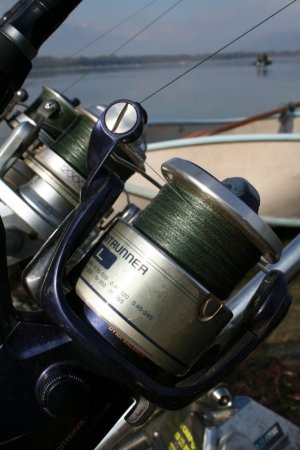
At this point, however, we have to talk about the defects, because so far we have painted the braid as “the” thread roll par excellence.
Here they are:
- Poor abrasion resistancecompared to nylon, the tightness of the braid to friction is almost nothing. A braided tense under the heads of the fish, hitting a rock or a shell of the mussel, jump in an instant. That's why we have to be attentive to the environment in which we fish for: if there are sharp rocks, banks of shells, or metal structures, the braid is to forget. We run the risk of losing any fish hooked;
- Cost: the braided line the coast, and even in the band at entry-level prices are high. Of course, once imbobinato and well cared for can last reel even 10 years, but compared to the nylon, the price is really high;
- Buoyancy: today in the market there are braids from the coil affondanti, but still cost more than the classic ones. They were created to eliminate the main shortcoming of virtually all of the braids on the market, that is, the fact that they float. In the long range, or fishing at a great distance by boat, this defect is very annoying because it results in lines torn by the engines of other boats, floating debris entangled that cause “bellies” tremendous and continuous beeps of the detectors due to the slightest breeze that moves the line to the surface. We can solve the problem by applying the take-up lever, but the operation is, the larger the distance, the more is cumbersome. If we decide to imbobinare the braid keep in mind its great quality, floating: also in the fishing to launch, it may result in annoying vibrations in mid-water in the vicinity of the terminal.
We summarize: the braid should be good for fishing at long distances, to pull out the carp in areas full of obstacles (not sharp though!) and for the launch of beyond the horizon by exploiting the large estate in front of small diameters.
With a final tip: bathing always the coil and the braid before release in launches powerful: the risk of wigs, when we have to deal with a wire so expensive, we can't afford it.

FLUOROCARBON
It is the “fashion” of the moment. Looks like a nylon but it is not at all. The differs for these qualities:
- Invisibility in water: if placed between the eye of the fish and the sun, the fluorocarbon is invisible. The degree of refraction of the particular makes a thread “the ghost”, the fish with the eyes can not see;
- Weight: the fluorocarbon has a specific gravity greater than nylon, and this translates into a affondabilità absolute. Those fishing in the quarry takes advantage of this quality to fish properly with the so-called “slack line”, that is, the line springs fully in the notice, so as not to scare the fish with the vibrations of the wire in mid-water;
- Low elasticitycompared to nylon, fluorocarbon is much less elastic, and this translates into greater control of the prey, as well as in more excitement during the fight, because the power of the fish you will download most of them on the rod;
- Rigidity: this quality translates into greater precision in the launch, because the thread “sbacchetta” not during the flight.
Like the braid, the fluorocarbon has its flaws. The first has to do with the sealing in relation to the tear, which is low.
If we are to draw near to the obstacles, and we are forced to strike suddenly and with power, best to use the nylon, because fluorocarbon on the wrench is weak.
In addition, it is a delicate material: the light of the sun and the weather deteriorate much more quickly, and the fluorocarbons, and nylon.
The third defect are the quality in the launch: if the stiffness helps accuracy, in reality impacts negatively on the maximum distances, because the thread will be imbobinato so much less harmonious.
Then, when imbobinare the fluorocarbon? The ideal is, indeed, the fishing in the quarry, - distance, medium-short and to the research of fish is very clever.
SportIT.com
Reproduction Reserved






